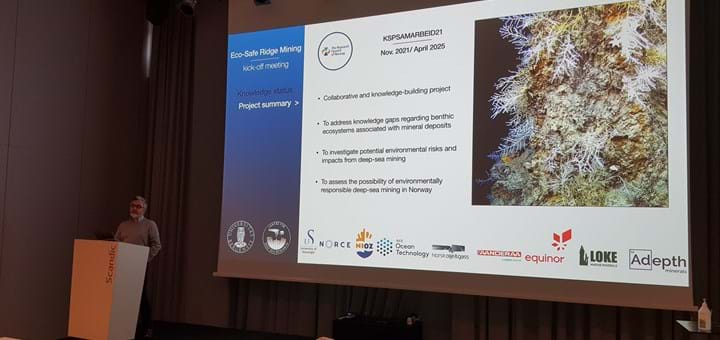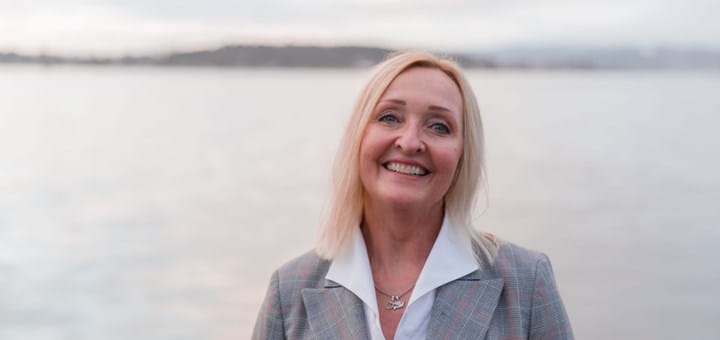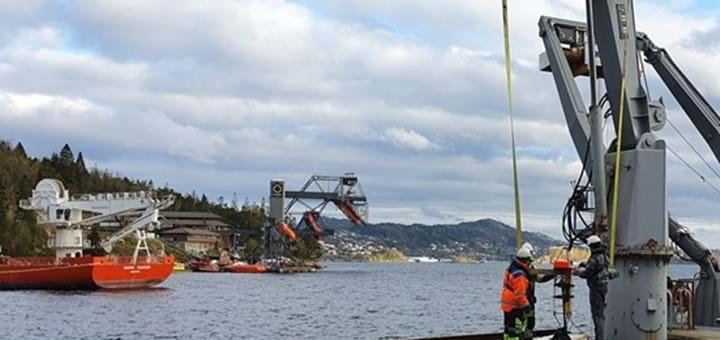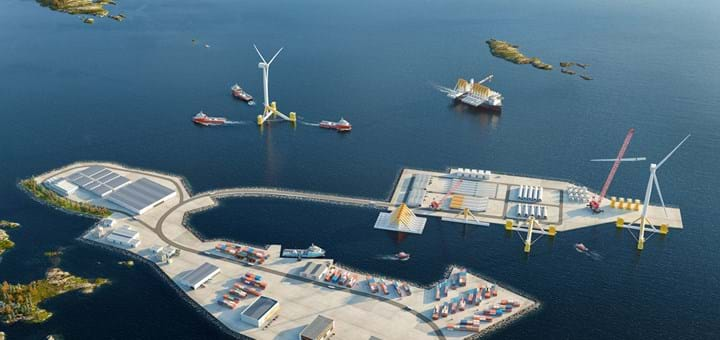Urgent need for speed within offshore wind

Almost 200 participants with an interest in offshore wind gathered under one roof in Bergen this week, to discuss the potential and ambitions to build an offshore wind industry that can further strengthen the Ocean City Bergen and Norway.
Offshore wind development is important to supply more power onshore and offshore and to further strengthen the leading offshore expertise that Norway and especially Western Norway and Bergen has.
The Bergen region has ports, a supplier industry, a competent workforce, the Bergen Offshore Wind Center at UiB, ocean clusters and proximity to large, possible new areas for the development of offshore wind. Moreover, we have particularly good conditions for becoming a leading player in offshore wind, and offshore wind can contribute the most growth in the coming decades. But for now, Norwegian offshore wind players are lacking momentum on the part of the government. Other limitations that were highlighted were lack of offshore wind ambitions from the government, lack of regulatory regulations, lack of predictability and long-term visions and lack of proper manpower.
A sense of urgency
The Norwegian governments realisation of Utsira Nord (1,5 GW) and Sørlige Nordsjø II (3 GW) is great, but both Kai Stoltz from GCE Ocean Technology and Gunnar Birkeland from Norwegian Offshore Wind Cluster reminded the crowd that these were merely first steps. They also reminded the audience what Norway is up against regarding global ambitions when they compared the modest Norwegian offshore wind investment with, for example, the major investments done in Scotlands ScotWind (25 GW) auction and France's ambition to build 50 Offshore Wind Farms with 40 GW of offshore wind capacity in operation by 2050.
It is incredibly important that we take a big step as an energy nation and set up the volumes so we can produce more projects, open more areas and expand offshore wind in Norway according to Beate Myking from Equinor. She said that upscaling is absolutely crucial to bring down costs and also a very important steppingstone for Norway globally.
The fact that NVE will now look at new areas is great, but there is a real sense of urgency and the global competition is precarious. We need offshore wind in the Bergen area now - we have to be involved and invest, Myking explained.
Promises from the Hurdals platform
Elisabeth Sæther (AP) State Secretary from the Ministry of Petroleum and Energy stated that while it feels pointless to tackle the daily work with the situation we now have in Europe and in Ukraine, the most important work Norway can do in the future is to have a stable and predictable energy policy.
The Norwegian government signalled in the Hurdal platform that it will facilitate a large-scale investment in offshore wind, among other things by increasing the pace of public processes.
The potential for offshore power generation is significant and while the debate is quickly about electricity and how well offshore wind can remedy this, we must not forget the industrial picture and build up our own industrial investment in offshore wind in Norway, we are already well under way, said Sæther.
Offshore wind plays a key role in enabling the reduction of emissions from oil and gas on the Norwegian shelf and achieve our ambitious climate targets. The government wants electrification of the shelf in the future primarily to take place with the help of offshore wind and Sæther is convinced that Bergen plays a central role there.
She stated that the Norwegian government will identify new areas for offshore wind investment in addition to Utsira Nord and Sørlige Nordsjø II and that further investment in offshore wind is an important topic for this government.
The ports are ready
The port of Wergeland are currently working on installing Hywind Tampen, Equinor's eleven floating offshore wind turbines, while the Port of Bergen can take an active role in business development, including facilitation of offshore wind according to Inger Hygen from Kluge.
As they are a limited company they can operate professionally and on an equal footing with private actors and get an autonomous position in relations to the municipality while the municipalities maintain important and responsible owners according to Hygen.
When it comes to the other municipal ports it is clearly an advantage for the ports that they organize themselves as limited companies like the Port of Bergen, says Hygen. Moreover, the municipalities need to do more than think about offshore wind they have to act at the planning level and collaborate with the industry.
To start regulating after the industry is in place, is too little too late, Hygen states.
The supplier industry is ready
Norsk Industri mapped the Norwegian supplier industry's feasibility in 2020 when it comes to capability to develop offshore wind on a larger scale on the Norwegian shelf and competitiveness in the international market.
The main findings showed that Norway suppliers are good at complex projects and with collaborating with partners, HSE focus, regulatory dialogue and marine experience while they lack a good market understanding, a comprehensive renewable strategy, customer understanding, skills with contract forms and are perceived as expensive.
Other key take aways
- Offshore wind can make a decisive contribution to covering long-term power production. Southern North Sea 2 alone will contribute up to 10% extra power production, according to Multiconsult
- The development of offshore wind can cut greenhouse gases on the Norwegian continental shelf. A climate agreement with the industry can provide offshore wind development according to the Petroleum Act. Odfjell Ocean Wind showed a great example on how their technology can be a solution to lower the emissions on the shelf.
- Offshore wind can cover local power needs in Bergen and relieve the strained grid situations according to a study performed by Multiconsult for Equinor indicates lower power prices and better grid security in Bergen.
At the paste we are moving in now, Norway and Bergen are slow speeding into offshore wind, and unless the speed is picked up, we might lose our competitive edge regarding our technology and competence within the ocean industries.
Contact Information


About
This conference was organised by GCE Ocean Technology, Invest in Bergen, Bergen Næringsråd, Norsk Industri and Maritime Bergen.






